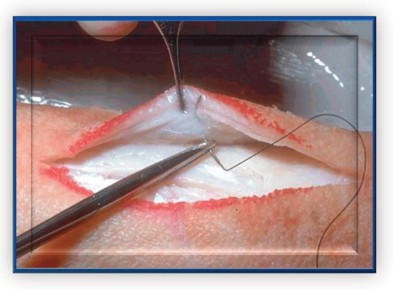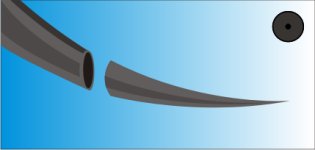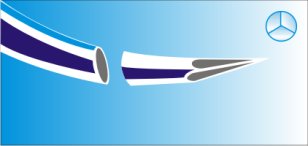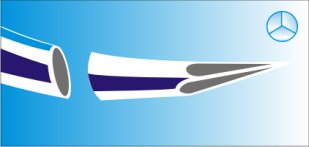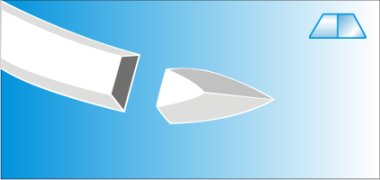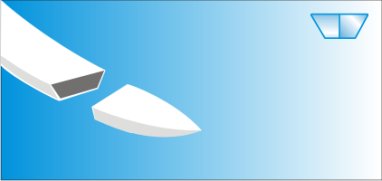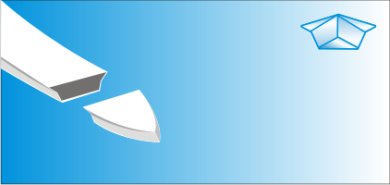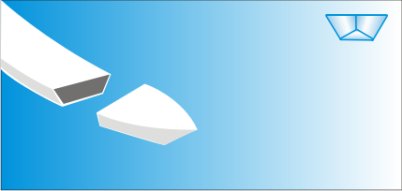Surgical Suture Material
The company TRANSKONTAKT-MEDICAL offers surgical suture material from the reputable American manufacturer STARMEDIX.
They are designed to achieve the desired effect for those who apply the stitches and to fit the given situation. They excel, among other things, in qualities such as:
- Stress-load ratio
- Tensile strength
- Retention rate
- Flexibility
- Individual viscosity
- Surface morphology
- Degradation
- Thermal properties
- Contact knot angle
- Elasticity
Properties, such as the stress-load ratio and tensile strength, have a direct impact on the amount of force that the suture will be able to withstand. Knotting will cause a severe reduction in the strength of the suture.
The suture is a thread which either draws together or holds together tissue until the healing process secures a sufficient level of strength of the wound or compresses the blood vessels in order to stop the bleeding. It is the largest group of products implanted into human bodies.
The history of surgery began 5000 – 3000 years BC. The sutures are used as a means to repair damaged tissue, damaged blood vessels and surgical incisions. As time went on, various types of materials started to be used for suture: flax, hair, linen strips, pig bristles, grass, ant mandibles, cotton, silk, animal guts, nylon, polyester and metals.
The use of sutures can be traced all the way to the Greek doctor Galen. In the 18th century buckskin and silver wire started to be used.
In the 19th century the opportunity to affect the properties of the colon by chemical means appeared.
Until the twentieth century cotton and treated natural materials were the most commonly used.
After the invention of nylon and polyester, cotton and natural materials were complemented by polyethylene, polypropylene, polyglycolic acid, polyglactin 910 and a large number of textile materials.
Sutures are made for diverse applications and with a wide range of various parameters:
- Twisted monofilament or multifilament
- Plaited or braided
- Dyed or undyed
- Coated or uncoated
- Different diameters in descending order from 7 to 1 and then from 1-0 to 12-0
- We offer more than 16,000 combinations of needles and sutures
Absorbable sutures have the following qualities:
- They are temporary thanks to their absorbing ability.
- They are degraded through the natural reaction of the body into alien substances.
- They have a different resistance level to absorption.
Non-absorbable sutures have the following qualities:
- They do not dissolve or degrade into the body.
- Generally, these are materials which do not occur in nature (with the exception of silk and nylon).
NON-ABSORBABLE SUTURES
- STARSILK™ – Silk
- STARESTER™ – Polyester
- TARSTEEL™ – Stainless steel
- STARLENE™- Polypropylene
- STARLON™ – Nylon
ABSORBABLE SUTURES
- STARLACTIN™ – Polyglactin 910
- STARLACTINRAPID™ – Polyglactin 910 Rapid
- STARCOLIC™ – Suture from plyglycolic acid
- STARCOLICRAPID™ – Polyglicolic acid rapid suture
- STARCAPRONE™ – Poliglecaprone suture
- STARDIOX™ – Polydioxanone suture
Needle overview
Circular cross section
ROUND BODIED – suitable for soft and easily permeable tissue, suitable for neurosurgery, microvascular applications, neurological injuries
ROUND BODIED HEAVY – larger diameter, suitable for a relatively stronger soft tissue
ROUND BODIED SLIM BLADE – smaller diameter, suitable for relatively soft tissue with the aim of ensuring clean and smooth penetration
ROUND BODIED BLACK – specially blackened needle in order to avoid dazzling, suitable for cardiovascular procedures calcified arteries
TAPER CUTTING- combination of a cutting tip and round needle cross-section for sclerotized, calcified and densely fibrous connective tissue, suitable for cardiovascular surgery, neurosurgery, neurological injuries, microvascular applications
TAPER CUTTING HEAVY – combination of a cutting tip and round needle cross-section, larger diameter, for relatively harder, sclerotized, calcified and densely fibrous connective tissue, suitable for cardiovascular surgery, vascular surgery, thoracic surgery
BLUNT POINT – suitable for blunt tissue dissection and suturing of friable tissue
BLUNT POINT HEAVY – arger diameter, suitable for blunt tissue dissection and suturing of friable tissue
Cutting cross section
CONVENTIONAL CUTTING – two cutting edges and the third blade on the inner, concave curvature of the needle, suitable for hard tissue
CONVENTIONAL CUTTING HEAVY – larger diameter, suitable for relatively harder tissue
CONVENTIONAL CUTTING PRIME – increased sharpness for cutaneous and subcutaneous sutures, suitable for precise, delicate plastic surgery
REVERSE CUTTING – the third cutting edge on the outer, convex, curved part of the needle, suitable for particularly dense tissues which are difficult to permeate
REVERSE CUTTING HEAVY – larger diameter, suitable for particularly dense tissues which are difficult to permeate
REVERSE CUTTING SLIM BLADE – smaller diameter, for relatively softer tissue with the aim of ensuring clean and smooth penetration, for cutaneous and subcutaneous sutures, suitable for plastic surgery
REVERSE CUTTING PRIME – increased sharpness, special geometry, for cutaneous and subcutaneous sutures, suitable for precise, delicate plastic surgery
PRECISION POINT REVERSE CUTTING – electrolytically polished, suitable especially for softer tissue
MICROPOINT REVERSE CUTTING – very smooth and sharp, with the blade on the outer arc, suitable for eye surgery
Spatula
CONVENTIONAL SPATULA – spatula with excellent visibility of the tip for checking the depth of penetration
MICROPOINT SPATULA CURVED – thin and flat profile, solely for eye surgery of the anterior eye segment, including procedures on the cornea, the sclera, the eye lid and very sensitive tissue
CSU SPATULA – reduced edge-angles of the spatula for better penetration, facilitates knot rotation, suitable for eye surgery, including procedures on the cornea, the sclera, the eye lid and very sensitive tissue
SBR SPATULA – cutting edges of the spatula for the layers of scleral or corneal tissue, facilitates knot rotation, suitable for eye surgery, including procedures on the cornea, the sclera, the eye lid and very sensitive tissue
